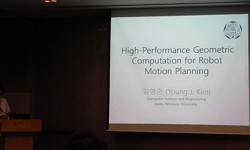This study investigated the feasibility of the lytic, tailed Bacillus cereus-specific phage for use in a ferromagnetoelastic (FME) biosensor as a novel recognition element. The phage was immobilized at various concentrations through either direct adso...
http://chineseinput.net/에서 pinyin(병음)방식으로 중국어를 변환할 수 있습니다.
변환된 중국어를 복사하여 사용하시면 됩니다.
- 中文 을 입력하시려면 zhongwen을 입력하시고 space를누르시면됩니다.
- 北京 을 입력하시려면 beijing을 입력하시고 space를 누르시면 됩니다.



Studies on Lytic, Tailed Bacillus cereus-specific Phage for Use in a Ferromagnetoelastic Biosensor as a Novel Recognition Element = Studies on Lytic, Tailed Bacillus cereus-specific Phage for Use in a Ferromagnetoelastic Biosensor as a Novel Recognition Element
한글로보기https://www.riss.kr/link?id=A105090790
- 저자
- 발행기관
- 학술지명
- 권호사항
-
발행연도
2018
-
작성언어
Korean
- 주제어
-
등재정보
SCIE,SCOPUS,KCI등재
-
자료형태
학술저널
-
수록면
87-94(8쪽)
- 제공처
- 소장기관
-
0
상세조회 -
0
다운로드
부가정보
다국어 초록 (Multilingual Abstract)
This study investigated the feasibility of the lytic, tailed Bacillus cereus-specific phage for use in a ferromagnetoelastic (FME) biosensor as a novel recognition element. The phage was immobilized at various concentrations through either direct adsorption or a combination of 11-mercapto-1-undecanoic acid (11-MUA) and [N-(3-dimethylaminopropyl)-N’-carbodiimide hydrochloride and N-hydroxysuccinimide (EDC/NHS)]. The effects of time and temperature on its lytic properties were investigated through the exposure of B. cereus (4 and 8 logCFU/ml) to the phage (8 logPFU/ml) for various incubation periods at 22°C and at various temperatures for 30 and 60 min. As the phage concentration increased, both immobilization methods also significantly increased the phage density (p < 0.05). SEM images confirmed that the phage density on the FME platform corresponded to the increased phage concentration. As the combination of 11-MUA and EDC/NHS enhanced the phage density and orientation by up to 4.3-fold, it was selected for use. When various incubation was conducted, no significant differences were observed in the survival rate of B. cereus within 30 min, which was in contrast to the significant decreases observed at 45 and 60 min (p < 0.05). In addition, temperature exerted no significant effects on the survival rate across the entire temperature range. This study demonstrated the feasibility of the lytic, tailed B. cereus-specific phage as a novel recognition element for use in an FME biosensor. Thus, the phage could be placed on the surface of foods for at least 30 min without any significant loss of B. cereus, as a result of the inherent lytic activity of the B. cereus-specific phage as a novel recognition element.
동일학술지(권/호) 다른 논문
-
- 한국미생물생명공학회(구 한국산업미생물학회)
- ( Yanyan Wu )
- 2018
- SCIE,SCOPUS,KCI등재
-
- 한국미생물생명공학회(구 한국산업미생물학회)
- ( Eun-ju Yang )
- 2018
- SCIE,SCOPUS,KCI등재
-
- 한국미생물생명공학회(구 한국산업미생물학회)
- ( Jeong Eun Kwon )
- 2018
- SCIE,SCOPUS,KCI등재
-
- 한국미생물생명공학회(구 한국산업미생물학회)
- ( Lenny S. F. Ahmadsah )
- 2018
- SCIE,SCOPUS,KCI등재





 ScienceON
ScienceON KISS
KISS







